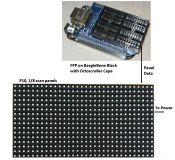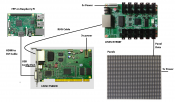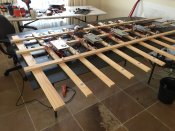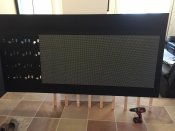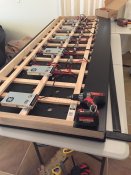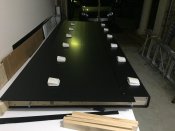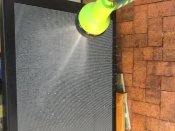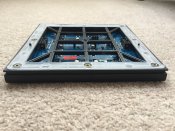darylc
404 darylc not found
- Joined
- Dec 8, 2012
- Messages
- 1,278
This is a multi part post to demonstrate a new (currently experimental) way of running 'Panels'
Background:
In late 2014/2015 the Christmas community worked towards getting P10 panels running from BeagleBone Blacks via Octoscroller capes and driven by Falcon Player.
The types of P10 panels that we can drive from the BBB are limited and thus as a community we typically can't use waterproof panels for example.
Whilst P10 panels work well for a lot of people driving them from BBB, I had a lot of problems doing in my 2015 show which motivated me to find another way.
Thanks to Wizard for the lead on the control cards, to CaptainMurdoch for his guidance in hacking FPP and to Smartalec for testing my FPP hacks in his show this year.
Background:
In late 2014/2015 the Christmas community worked towards getting P10 panels running from BeagleBone Blacks via Octoscroller capes and driven by Falcon Player.
The types of P10 panels that we can drive from the BBB are limited and thus as a community we typically can't use waterproof panels for example.
Whilst P10 panels work well for a lot of people driving them from BBB, I had a lot of problems doing in my 2015 show which motivated me to find another way.
Thanks to Wizard for the lead on the control cards, to CaptainMurdoch for his guidance in hacking FPP and to Smartalec for testing my FPP hacks in his show this year.


